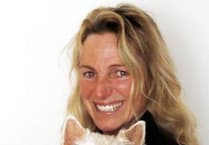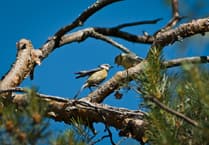ON a recent drive from St Briavels to Newnham I was struck by the unique system of villages and that we have here in the Forest. In the absence of a direct route between these two villages (or is Newnham a town?) there are many different ways of making this scenic journey.
There’s the two town (and some villages) track through Cinderford and Coleford, the one town option through Lydney and then through Bream or creeping up on St Briavels through Aylburton and Aylburton Common. But my favoured route is to avoid the towns, and drive through Blakeney, Yorkley and Bream, to appreciate the wonderfully idiosyncratic system of villages we have here.
John Major used to evoke a nostalgic image of a rural England with duck ponds, village pubs, thatched cottages, village greens, and churches to which old maids would cycle to for morning song along misty lanes. That’s all very well, but doesn’t have much resemblance to the charmingly haphazard arrangement of villages that the Forest has.
There’s a long straggling range of village settlements from Bream to Blakeney, through Whitecroft, Pillowell, Yorkley, Oldcroft and Viney Hill, and it’s not clear where one ends and the next begins. There’s continuous development from Whitecroft to Yorkley, and at some arbitrary point on this journey you will note a road sign advising that you are now entering Pillowell. But well before then you will have passed the sadly former pub which was universally known as the Swan Pillowell, once one of the flock of 5 Swan pubs in the Forest, with the Swan at Lydney now the only survivor. (To digress slightly, I remember when the Swan Pillowell pub was home to the most formidable quiz team in the Forest). Where does Pillowell end and Whitecroft or Yorkley begin?
And in the wider Forest, where does Milkwall become Sling? Or Milkwall become Coalway, or Netherend become Woolaston, or Woodcroft become Tutshill become Sedbury? Where does Cinderford become Ruspidge? Ruspidge Post Office is in St Whites Road, which I thought was in Cinderford. And there are a range of Forest villages that don’t fit in with John Major’s idealised picture of a settlement around a village green and church. There are the long straggling post-industrial villages of Lydbrook and Soudley (Upper and Lower), no duck pond in sight, and villages like Parkend, Bream and Huntley, where churchgoers have to cycle to the edge of their village or beyond if they are pedalling their way to church. Not a thatched house to be seen. And, sadly, in some villages Including Brierley, Brockweir, Purton and Awre, there is now no pub.
There was no acknowledgement of these now mainly post-industrial villages in John Major’s idealised rustic vision of rural Britain. The concept of an industrial village is alien to some people, so I imagine that a post-industrial village is even more alien to them. But there is a cricket pitch in the heart of some post-industrial Forest villages at the Cut and Fry, Yorkley, and in Parkend, which would easily slip into a romantic post-industrial painting.




